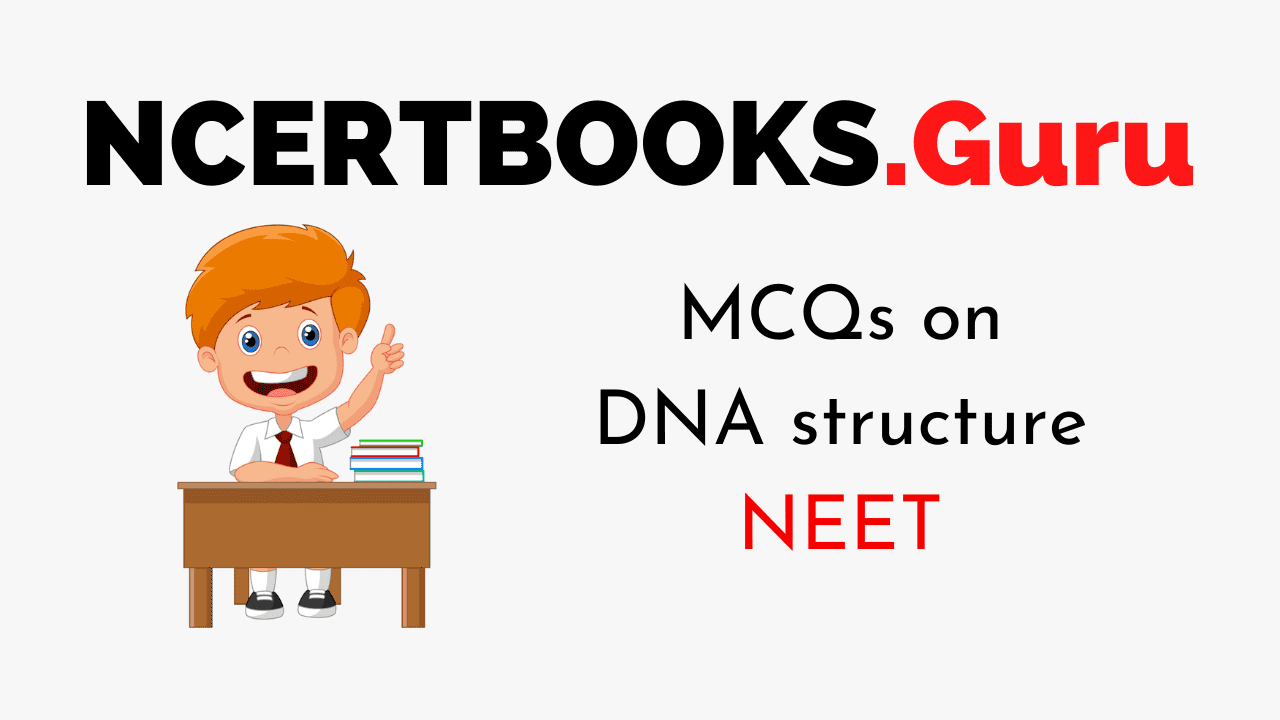NEET Biology is the scoring paper in the medical entrance examination. Here, you will discover the NEET Biology MCQ Questions for all Concepts as per the latest syllabus. Practice more on a regular basis with these NEET Biology objective questions on air pollution and improve your subject knowledge & problem-solving skills along with time management. NEET Biology Deoxyribonucleic acid(DNA) structure Multiple Choice Questions make you feel confident in answering the question in the exam & increases your scores to high.
MCQs on Deoxyribonucleic acid(DNA) structure
1. DNA fingerprinting recognizes the differences in
(a) satellite DNA
(b) bulk DNA
(c) Repetitive DNA
(d) both (a) and (c)
Answer
Answer: (d)
2. This force can stabilize a DNA double-helix
(a) Hydrophilic sugar-phosphate groups are found on the exterior of the helix where interaction with water occurs
(b) Hydrophobic bases are present in the interior of the helix, each base-pair is stabilized by the same number of hydrogen bonds
(c) covalent base stacking interactions may take place between neighbouring bases within the same strand in the helix
(d) non-covalent N-glycosidic bonds may form between nitrogenous bases in opposite strands in the helix
Answer
Answer: (a)
3. In this type of DNA replication, of the two newly formed molecules, one is purely a new one and the other is an old one
(a) dispersive
(b) conservative
(c) semiconservative
(d) both (b) and (c)
Answer
Answer: (c)
4. The process of DNA replication is affected by an enzyme known as
(a) Mutase
(b) Ligase
(c) Polymerase I
(d) Ribonuclease
Answer
Answer: (c)
5. A DNA molecule in which both strands have radioactive thymidine is permitted to replicate in an environment that contains non-radioactive thymidine. What is the right number of DNA molecules which possess some radioactive thymidine post three duplications?
(a) one such molecule
(b) two such molecules
(c) four such molecules
(d) eight such molecules
Answer
Answer: (b)
6. If the DNA strand has nitrogenous base sequence ATTGCC, the mRNA will have?
(a) ATTGCA
(b) UGGACC
(c) UAACGG
(d) ATCGCC
Answer
Answer: (c)
7. The type of coiling in DNA is
(a) Zig-zag
(b) Left-handed
(c) Opposite
(d) Right-handed
Answer
Answer: (d)
8. In DNA, the enzyme which breaks the H2 bonds is
(a) Ligase
(b) Helicase
(c) Topoisomerase
(d) Polymerase
Answer
Answer: (b)
9. The total DNA comprises what amount of cytoplasmic DNA in cells?
(a) 95-99%
(b) 65-75%
(c) 45-50%
(d) 1-5%
Answer
Answer: (d)
10. The bases are held together in a DNA double helix by hydrogen bonds. These bonds are
(a) Ionic bonds
(b) Covalent bonds
(c) Non-covalent bonds
(d) Van der Waals forces
Answer
Answer: (c)
